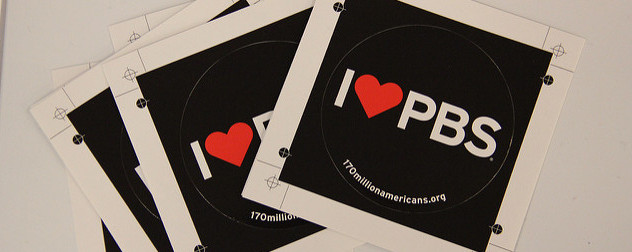I subscribe to the notion that viewer-supported television is the best way to get the quality programing I want to watch.
That is why I send money regularly to my favorite outlets, with Netflix and Amazon Prime topping the list. But those payments also go to Comcast, Cablevision and a growing number of other places where I can pay for the commercial-free programing that I want.
So where do the Corporation for Public Broadcasting and my local PBS affiliate – or rather, affiliates, since I live in multiple places – fit in this picture?
I have no problem with the idea that if I use these services, I ought to pay to support them. And I do use them, to an extent: I watch “PBS NewsHour” on occasion; I watch “Masterpiece” when they are showing one of their period pieces, of which my wife is a particular fan; and I watch the occasional special presentation. But time, as well as money, is a limited commodity. Just like every other programmer, public television has to compete for an audience these days.
Public television has grown accustomed to an advantage that its competitors do not have, however; it gets checks from the United States Treasury. In other words, people who never watch public television – or who, these days, may not even own a television – help subsidize those who do. And Americans, even those who watch a lot of public television, also inevitably support comparatively weak programing, especially in small markets, that may boast practically no audience at all but that attracts support from politicians and other movers and shakers.
When the Corporation for Public Broadcasting first arrived in the 1960s, the media landscape was very different. Newton Minow, the Federal Communications Commission chairman at the time, famously called television’s offerings “a vast wasteland” in a 1961 speech advocating better use of the access to public airwaves broadcasters enjoyed. Whatever you think of the “wasteland” part of his characterization, a modern TV viewer would be hard-pressed to agree with “vast;” that year, there were still only three networks entertaining American audiences.
Still, Minow’s speech had a pronounced effect on broadcasters and lawmakers alike. Rather than crack down on the lovable Gilligan (whose boat was facetiously named for the FCC chief) or the “bewitching” Samantha Stephens, politicians decided instead to fund alternative television for more high-minded pursuits. Lyndon Johnson signed the Public Broadcasting Act into law in 1967, establishing the Corporation for Public Broadcasting and paving the way for PBS and NPR.
Times have changed since then. Programing for infinite topics at all levels of quality is readily available and supported through other public policies. For instance, we subsidize broadband to low-income households and rural areas, partly in order to make such programming accessible.
So when the Trump administration budget proposal, released last week, called to eliminate federal funding for the Corporation for Public Broadcasting, was it an assault on the liberal media? Or was it just a recognition that, in the 21st century, public broadcasting’s mission may be redundant?
If it isn’t, its audience or sponsors (public broadcasters hate that word) should pay to support it. In the unlikely event that the Corporation for Public Broadcasting’s federal funding is fully eliminated, the result will almost certainly be that it will adapt to the new environment and will develop and exploit alternate funding sources. Opponents of the plan to defund the Corporation for Public Broadcasting are quick to cite the figure of $1.35 per year – the average annual cost of their budget per taxpayer – which suggests that even if only one in seven Americans wanted to help make up the difference, it would cost each of them less than $10 annually. Compared to most streaming services, this is still a great deal.
This adaptation to new ways of funding will be a good thing, because in this era of online subscriptions, it is ridiculous to subject audiences to interruptions while stations beg for money during their periodic pledge drives. Also ridiculous is the Corporation for Public Broadcasting’s distribution mechanisms, which try to force its audience into supporting their local stations, and thus funding popular national programs indirectly rather than allowing viewers to more economically and directly purchase programing they want to watch. If public broadcasters want to preserve this model, fine. But there is no reason to expect taxpayers to fork over funds to make up the shortfall.
The best public programming will find an outlet and keep its audience, regardless of the funding mechanism. Just like everywhere else in the media landscape, programming that cannot justify its own existence will get canceled. If that leaves a hole in your viewing schedule, there is always something showing on Netflix.









March 20, 2017 - 10:14 pm
What about children’s programming like Sesame Street, Wishbone, and other educational shows that people don’t have to pay for? Many parents can’t afford a monthly payment to Netflix or Amazon. When Sesame Street premiered in 1969, I don’t think that many lower income parents would have spent discretionary money for a monthly subscription service to get quality, daily children’s programming. I for one felt that my children reaped great benefits from these shows, and honestly at the time if I had to subscribe to get this programming, I am not sure that I would. I am glad that PBS made these viewing opportunities available for my family and hope they continue to be able to do so.